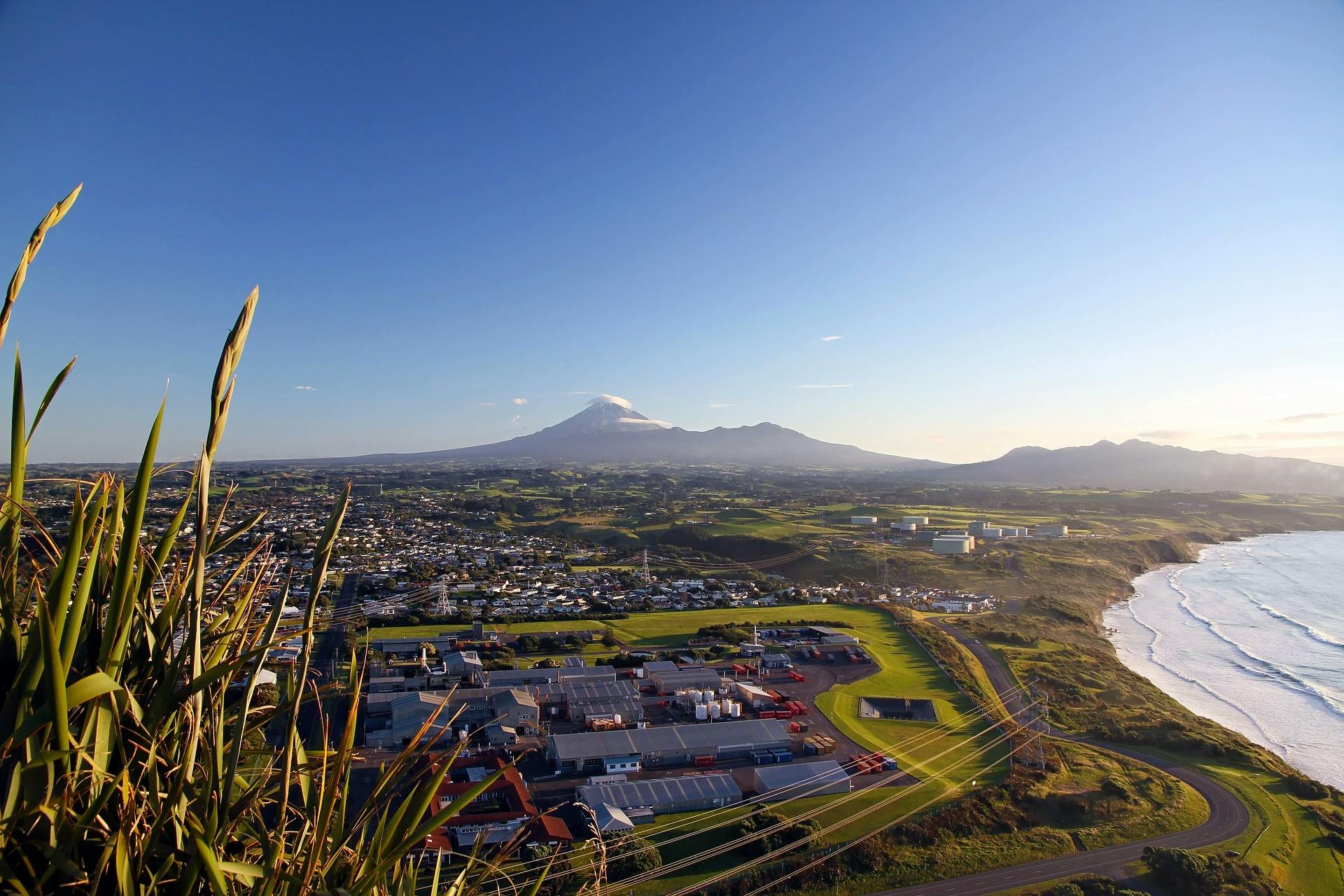The four pillars or pou of our Sustainability Strategy demonstrate the pathway Clarus is on to decarbonisation while doing right by our environment, people and communities with effective governance.

Our Targets
Develop five renewable energy projects or investments to investment decision by 2026.
Completion of hydrogen blending pilot (up to 10% blend) within a gas distribution network by end 2024.
Performance against ESG targets is linked to remuneration.
Reduce our landfill waste by 25% from 2023 to 2025.

Taranaki sun powering our solar panels
Thanks to some stunning New Plymouth sunshine, the solar panels at our Clarus Bell Block offices have been performing well since they were installed in June 2024. The panels are on the north facing roof of the Maintenance Building. On good days they have been generating more than half the power the office uses at peak times and even pushing some of the power they generate back into the grid.
The power generated provides significant environmental benefits like using less grid-imported power at Bell Block, reducing Co2 emissions. This supports our Environmental, Social and Governance (ESG) programme to cut our greenhouse gas emissions 30% by 2030 from 2019 levels.
They are proving efficient and cost effective to run. All the panels need to work well is a bit of sun, and a wash every six months or so to get any sea salt spray and bird droppings off their surfaces.
Every little bit helps on the journey to a lower emissions future. On a good day, these solar panels could even fully power the site – but that’s up to nature.
Climate Change Risk
Climate Change Risk

The Te Horo hydrogen blending pilot
Firstgas is undertaking a WorkSafe-approved pilot, blending a small amount of green hydrogen with natural gas in the Te Horo pipeline network from early March 2025 for four months. Hydrogen is scalable, dependable and is low carbon as it can be made cleanly using just water and renewable electricity. Blending hydrogen with natural gas helps reduce emissions by lowering the carbon content of the gas you use. This pilot is a step toward a cleaner energy future.

New Zealand's largest solar farm is coming
Clarus has entered a partnership with global renewable energy infrastructure developer, Harmony Energy to develop and own Tauhei Solar Farm. Once developed, it will capture Te Aroha sunshine using ~330,000 solar panels over ~260 hectares of land - equivalent to the size of around 371 rugby fields.

Biogas to pipeline upgrade facility
Clarus business, First Renewables Biogas upgrade facility transforms kerbside food waste into biomethane, a renewable substitute for natural gas. Located at Ecogas’ Organics Processing Facility in Reporoa, it’s the first facility of its kind in New Zealand and marks a significant milestone in New Zealand’s journey towards a sustainable, low-carbon energy future.

Climate Leaders Coalition member
Clarus is a member of the Climate Leaders Coalition (CLC) of New Zealand and we are one of many organisations around the country who have committed to taking voluntary action on climate change.
At Clarus we access our emissions in accordance with ISO 14064-1:2018 Green House Gases to meet our commitments under the CLC Statement of Ambition.
Each year since 2019 we have measured our Category 1-6 (Scope 1-3) greenhouse gas emissions. That measurement allows us to better understand our business’ Category 1-6 emissions and to consider which of those areas have the biggest opportunities for reduction.
We’re continuously striving to improve our systems to better understand our emissions profile and to ensure our emissions reduction planning and strategic investments make a long-term difference.


